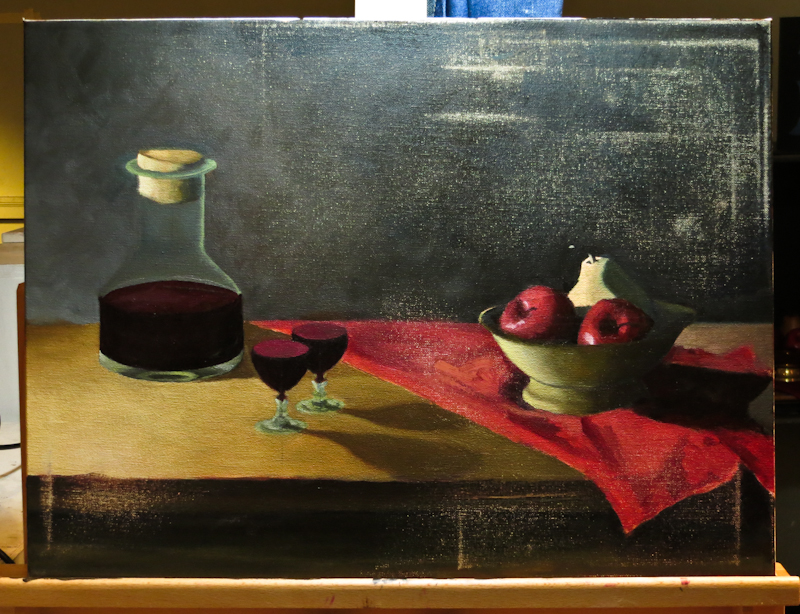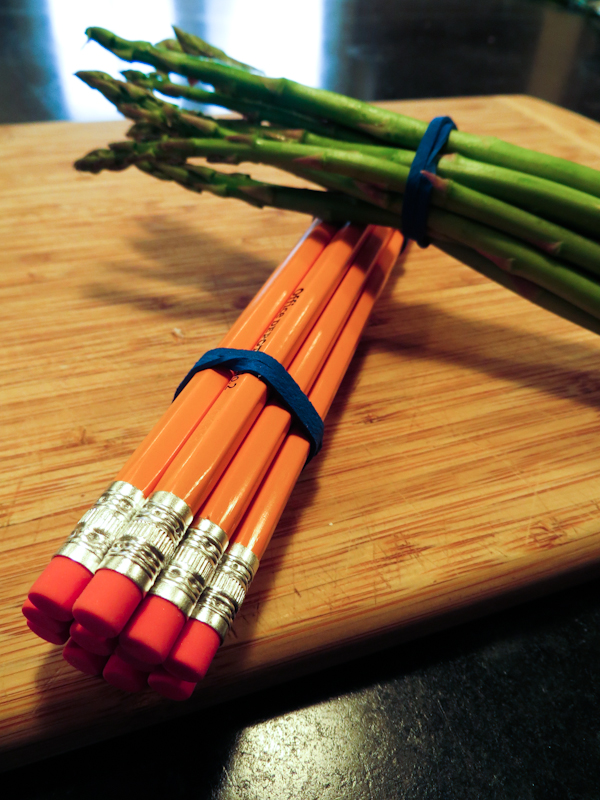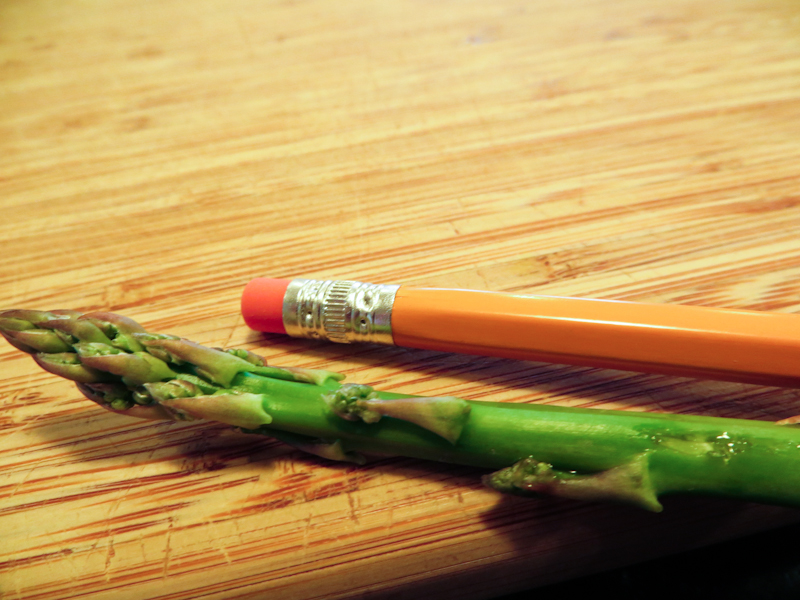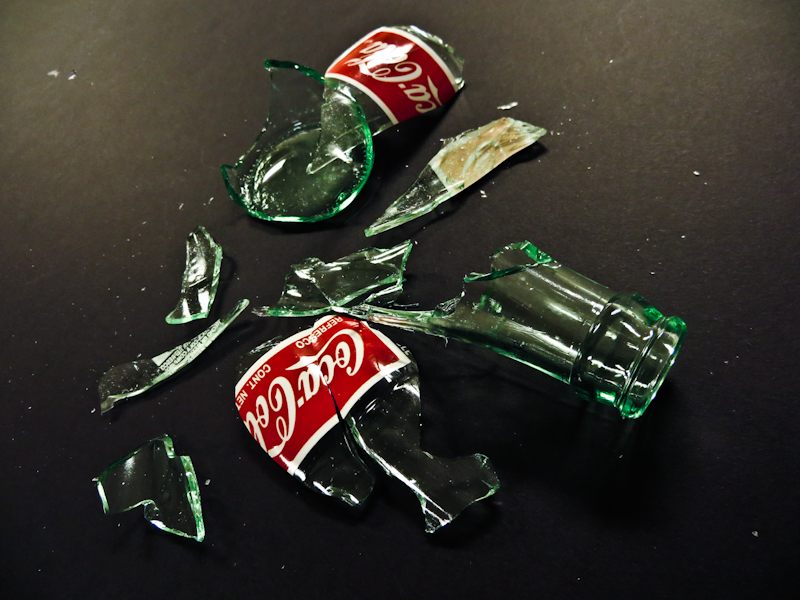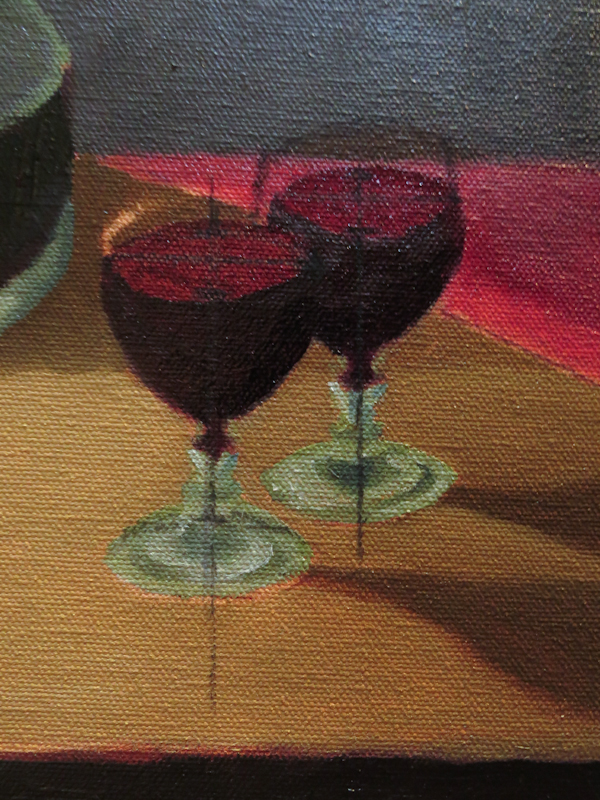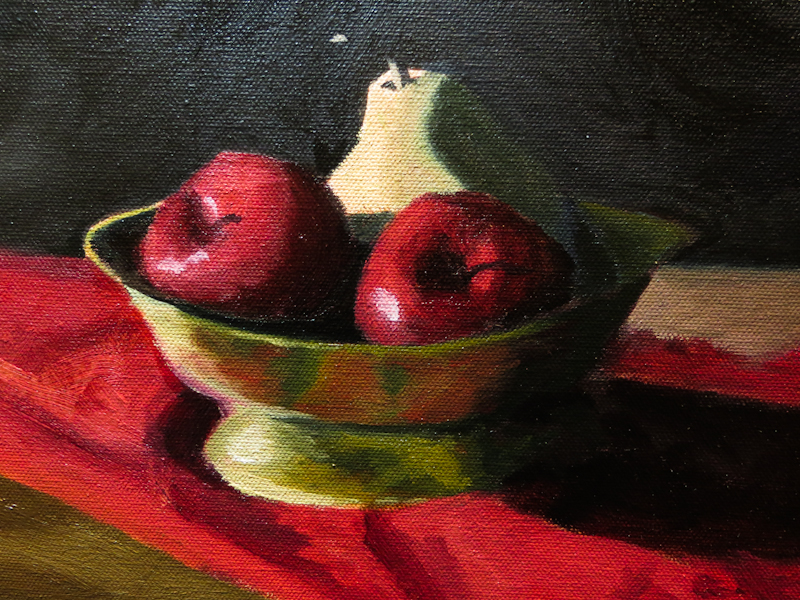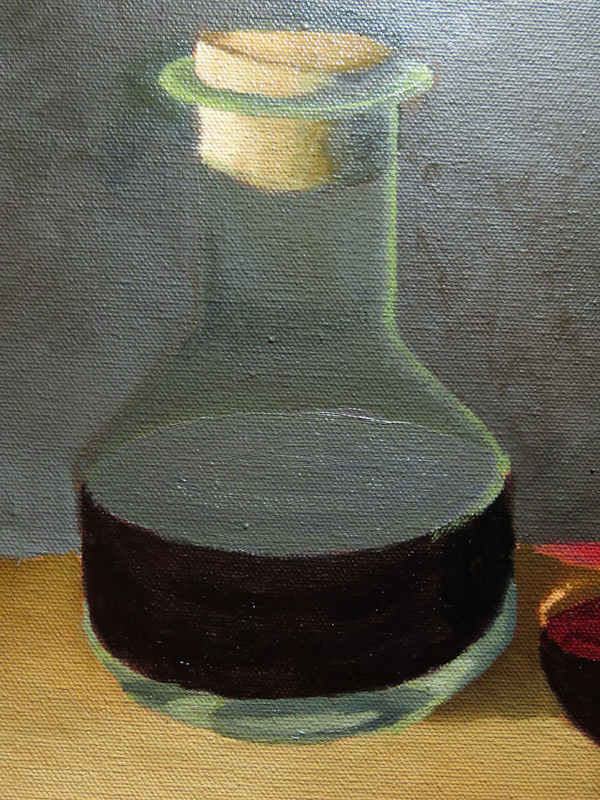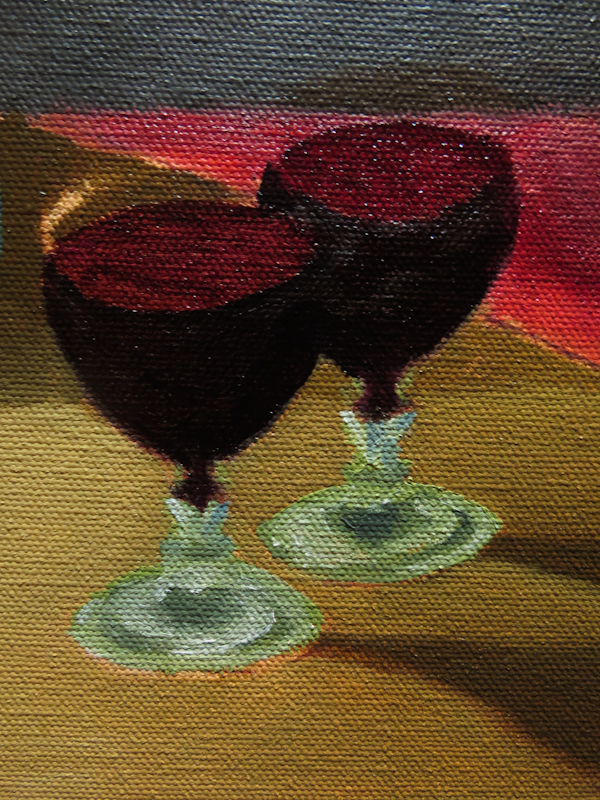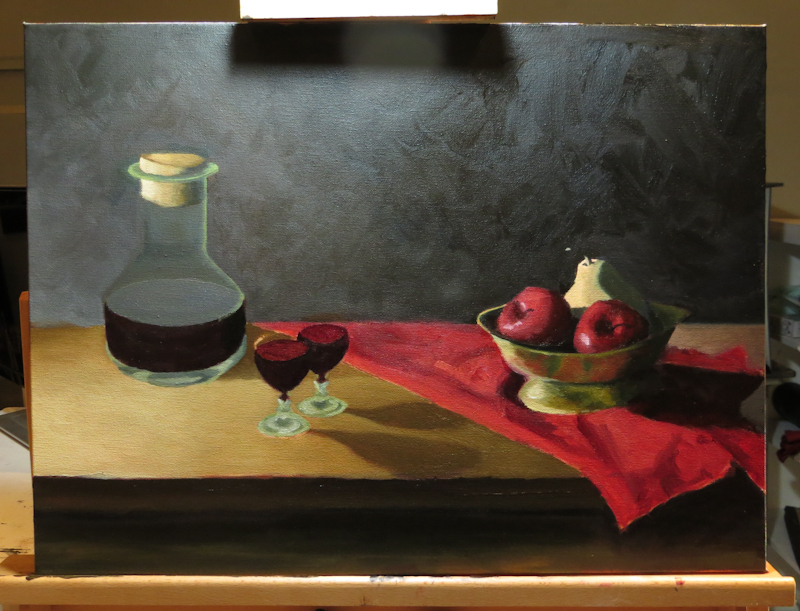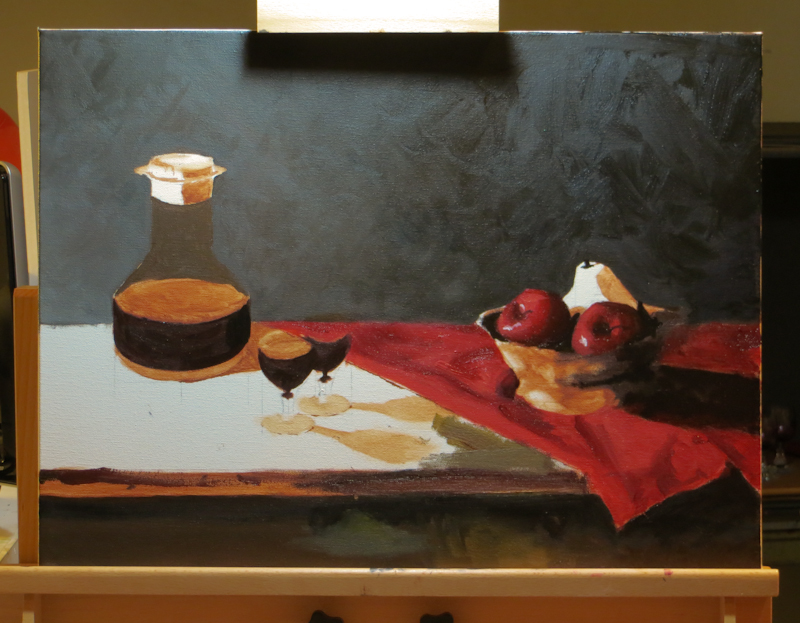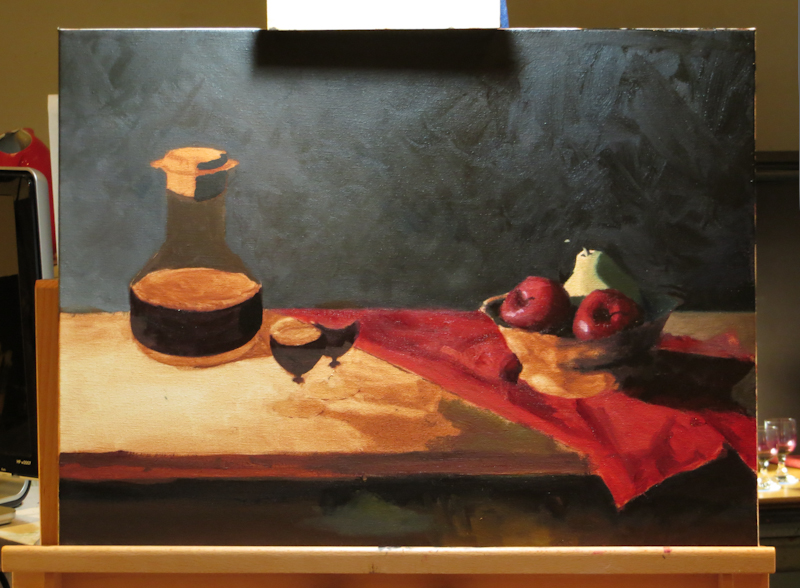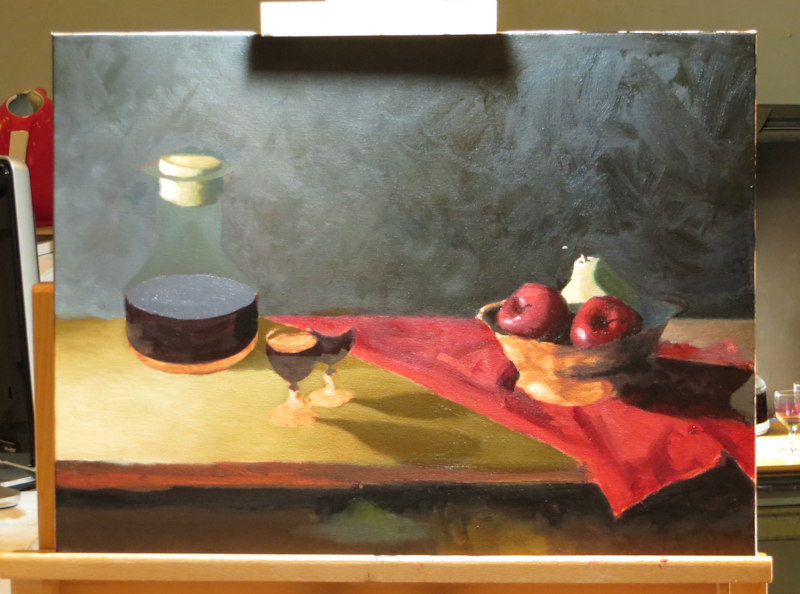Today I finished adjusting the ellipses so that the painting has a consistent eye level. I think the shapes are good enough to proceed, but it is amazing how many things I can find to fix. It seems the longer you look at a painting, the more problems you find. Not really sure how you know when you are done.
This painting still has a way to go. First, I want to sand off some ugly brush strokes in the background and on the cloth. Once I’ve done this, I plan to repaint the gradients in the background and on the table top to be more dramatic. On the table, especially, I want to emphasize the pool of light on the left, while adjusting the shadows to be consistent with a single light source. Once I’ve done that, I will finish up the folds and shadows on the cloth and paint the narrow line of shadow under the left side of the cloth. Then I’ll do the reflections on the bowl, finish the fruit, and finally add specular highlights.
The end is in sight, but I still probably have a couple of weeks to go.
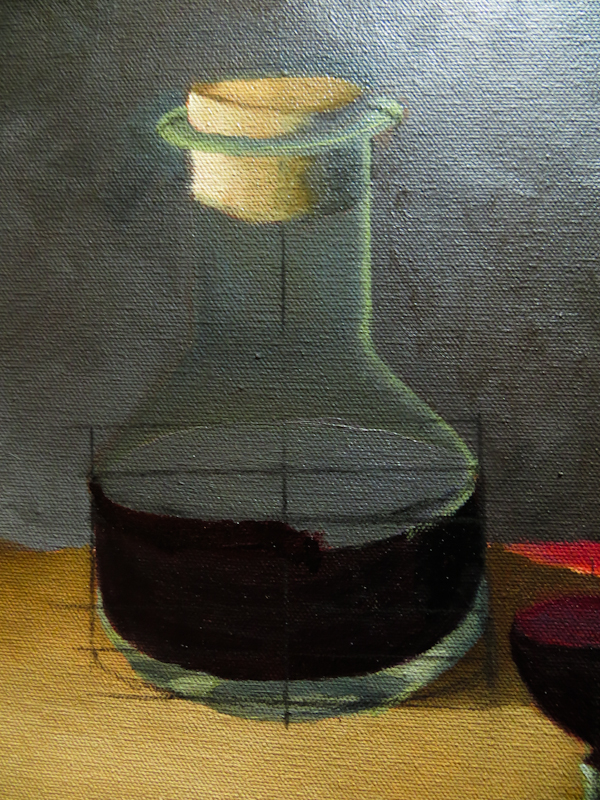
Beginning to move to a lower eye level. Construction lines are drawn in vine charcoal.
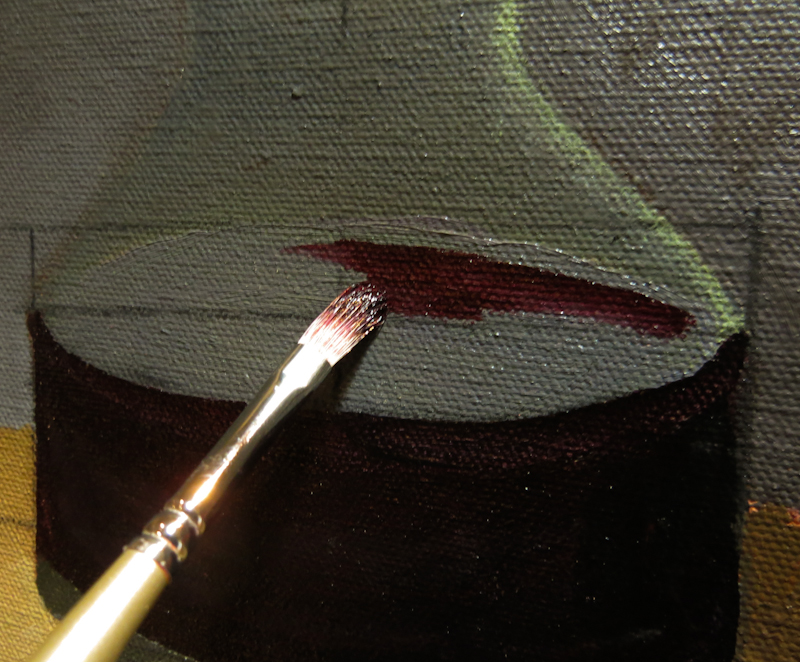
Adjusting the ellipse at the surface of the wine.

At this point, all of the shapes look pretty good. I’ve lowered the eye level for the decanter and adjusted the wine glasses.




